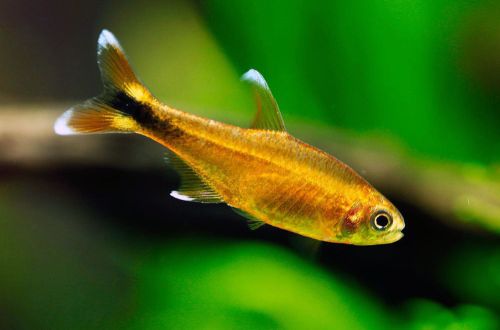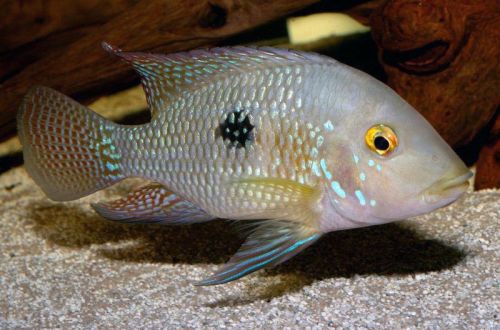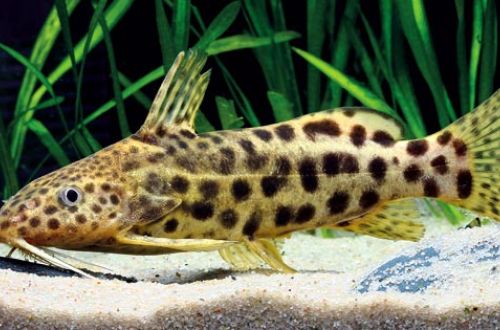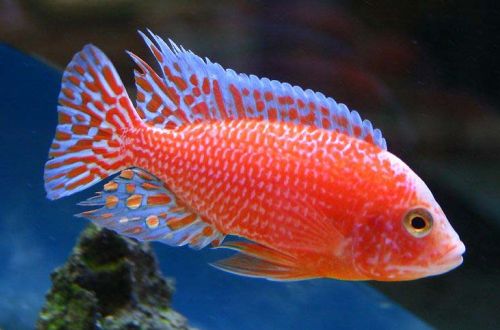
Hasemania
The copper tetra or Hasemania, scientific name Hasemania nana, belongs to the Characidae family. It is considered one of the best Tetras for the general aquarium due to its bright coloration, excellent compatibility with other popular fish, hardiness and unpretentiousness.

Mataupu
Nofoaga
It comes from the San Francisco River basin (port. Rio São Francisco) from the territory of Brazil. It occurs in small streams, rivers and channels of the main channel. The habitat experiences seasonal fluctuations in water levels, and the river itself flows through hilly, in places mountainous terrain.
Fa'amatalaga puupuu:
- Ole tele ole pusa tioata - mai le 70 lita.
- Vevela – 23-28°C
- Tau pH - 6.0-8.0
- Vai malo – vaivai i le malo (5-20 dGH)
- Ituaiga fa'avae – so'o se
- Malamalama – fa'ato'ilaloina
- Suavai pa'epa'e - leai
- Suavai fe'avea'i - feololo
- Ole lapo'a ole i'a e o'o ile 5 cm.
- Mea'ai - so'o se mea'ai
- Amioga – filemu
- Tausia i se lafu a itiiti ifo i le 8-10 tagata
faʻamatalaga
Adults reach a length of about 5 cm. The color is silvery with a rich copper tint. Most of the caudal peduncle is dark, the tips of the tail and fins are white. Females are more modestly colored, the colors are not so saturated.
Kuka / Gasesega
Absolutely not pretentious appearance, the walls accept all types of popular food (dry, frozen, live). Their quality and composition largely affect the color of the fish, so strive to purchase food only from well-known and reputable manufacturers.
Tausia ma le tausiga, faʻatulagaina o le pusa tioata
For a group of fish of 8-10 individuals, a tank of 70 liters or more will be required. Hasemania is not demanding in the design of the aquarium and adapts perfectly to various water conditions. The only recommendation is the presence of subdued lighting, because in bright light the color of the fish noticeably fades, becomes nondescript.
Amioga ma Fegalegaleaiga
A peaceful schooling fish, kept in a group of at least 8–10 individuals, with a smaller number become somewhat aggressive, although with their size it is unlikely that they will be able to cause problems to their neighbors. Compatible with many well-known aquarium species, including viviparous, zebrafish, rasboras, corydoras catfish, some gourami, South American cichlids and others.
Fa'atosina / fa'atupuina
O foliga vaaia o falai e mafai lava i totonu o se pusa tioata masani, ae o le a laʻititi la latou numera ma o le a faʻaitiitia i aso uma pe a le totoina i totonu o se vaʻa eseese i le taimi. O le sese uma lava o iʻa matutua, lea o le falai o se faʻaopoopoga sili i meaʻai.
In order to increase the chances of survival and somehow systematize the breeding process (spawning was not spontaneous), it is recommended to use a spawning aquarium, where sexually mature fish are placed during the mating season. Usually this is a small container with a volume of about 20 liters. The design is arbitrary, the main emphasis is on the substrate. In order to protect the eggs from being eaten (Tetra copper eats its own offspring), the bottom is covered with a fine-mesh net, or small-leaved plants or mosses (for example, Java moss). An alternative way is to place a layer of glass beads with a diameter of at least 1 cm. The lighting is subdued, a heater and a simple airlift filter are sufficient from the equipment.
O le faʻaosofia mo le amataga o le vaitau o le faʻaipoipo o se suiga malie i le vai i totonu o le pusa tioata masani i tulaga taua nei: pH 6.0-6.5, dH 5-10 i le vevela e tusa ma le 28-30 ° C. Ole fa'avae ole mea'ai e tatau ona fa'a'aisa po'o mea'ai ola.
Va'ai ma le toto'a le i'a, e le o toe umi ae fa'ata'ali'oli'o nisi o i'a - o fafine ia ua fula mai le caviar. O le a amata ona faia e tama'i leo e pei o le tagi - o se vaega lea o lenei ituaiga ma fa'aalia faailoga o le gauai atu ia latou tagata filifilia. Sauni ma fa'atumu le tane fa'ata'oto ile vai mai le tane fa'alaua'itele. Tuu fafine iina, i le aso e sosoo ai o ni tane tetele se lua e sili ona mataʻina.
It remains to wait until spawning occurs, its end can be determined by females, they will “lose weight” greatly, and eggs will be noticeable among the vegetation (under a fine mesh). The fish are returned. The fry will appear within 24-36 hours, after another couple of days they will begin to swim freely in search of food. Feed with specialized microfeed.
Fa'ama'i i'a
O le paleni o le aquarium biosystem ma tulaga talafeagai o le faʻamaoniga sili lea e tetee atu ai i le tupu mai o soʻo se faʻamaʻi, o le mea lea, afai o le iʻa ua suia amioga, lanu, mea e le masani ai ma isi faʻailoga e aliali mai, siaki muamua le vai, ona faʻaauau lea i togafitiga.





